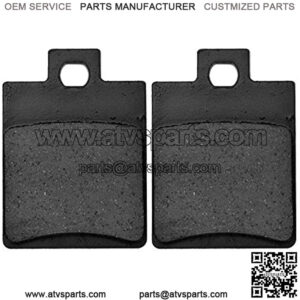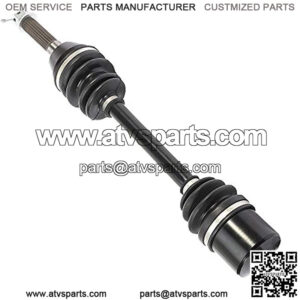What Is The Brake Shoe?
The brake shoe is a curved piece of metal used in drum brakes. Each brake shoe has friction material (known as brake lining) on one side.
The brake lining comprises of different types of heat resistant materials mixed with compounds like ceramic, brass, and graphite.
Brake shoes come in pairs and are usually bought in sets of four shoes — with two on each side.
You may notice one shoe in the pair has friction material that’s slightly shorter than the other. This is the primary shoe and faces the front of the vehicle. The secondary shoe, with more friction material, faces the rear.
Why is there a difference?
As the secondary shoe handles more braking than the primary shoe, it requires more friction material.
Now, let’s learn how brake shoes work.
How Brake Shoes Work In Drum Brakes
A drum brake system consists of a pan-shaped brake drum, a backing plate, brake studs, a hydraulic wheel cylinder and curved brake shoes. The friction material on the brake shoes faces outwards towards the inside of the brake drum.
Here’s what happens when you step on the brake pedal:
- Force is converted into hydraulic pressure in the brake line from the master cylinder.
- The hydraulic pressure through the brake line is transmitted by brake fluid, activating a piston in the wheel cylinder.
- The piston pushes the brake shoes to contact the inside of the brake drum.
- The brake shoes create friction with the brake drum, slowing the wheel.
- When the brake pedal is released, stiff return springs retract the shoes to the original position.
- A screw adjuster in the drum brake assembly extends gradually to compensate for worn brake shoes over time.
What about disc brakes?
The drum brake is a reliable braking system, though disc brakes (that use a caliper, brake pads, and rotor instead) have superseded it. You’ll still find a drum brake on the rear wheel of many cars because they’re cheaper to manufacture than disc brakes.
What about the parking brake?
The parking brake, or emergency brake, is operated from a lever via an emergency brake cable. When you pull the parking brake lever, it forces the brake shoes apart, the same way that hydraulics do.
In vehicles utilizing a drum brake system, the rear brake shoe pair performs the parking brake job. In cars with rear disc brakes, there’s usually a smaller drum brake in the brake rotor that performs a similar function.
About brake shoe
“brake shoe material”
“brake shoe bike”
“brake shoes”
“brake shoes and drums”


